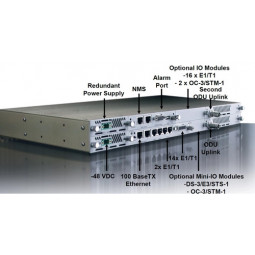CableFree MMR - Modular Microwave Radio
- Compact, split Indoor-Outdoor configuration
- Spectrally Efficient, Software-Defined IDU
- Powerful Forward Error Correction (FEC)
- Adaptive Power Control (APC, ATPC)
- ACM (Adaptive Coding & Modulation)
- XPIC fully supported – optional feature
- Capacities of 364, 728Mbps and higher
- Mix SDH, PDH and IP/Ethernet Interfaces
- Rugged & proven telecom-grade design
- 1+0, 1+1, ring, star and mesh architectures
- Scales up to 2+0, 4+0, 8+0 for Nodal Solution
CableFree Microwave radios are high performance, modern generation wireless networking platforms supporting mixed IP/Ethernet, SDH and PDH interfaces, operating from 4 to 42GHz frequency bands and payloads from 16 to 364, 728Mbps and higher up to 2.9Gbps with N+0 carrier aggregation, and Clustering to provide flexible Nodal Solution for high capacity networking. Wireless Excellence has pioneered the use of Software-Defined Radio which enables in-service upgrades, remote configuration, low equipment costs. CableFree Microwave systems offer users maximum useful lifespan and minimal capital and operating expenditure (CAPEX and OPEX). Advanced networking features in the CableFree Microwave IDU include scalable Ethernet capacities up to 1.5Gbps, SDH support and PDH switching to add/drop up to 160 E1 channels between “East”, “West” and “Front Panel” ports which radically reduces costs and increases flexibility in a modern cellular network operator network, with ring, star and mesh configurations. High availability configurations include 1+1 protection.
Operating distances vary depending on local weather conditions, specifically link frequency and rain intensity.
Planning for microwave wave spectrum use must take into account the propagation characteristics of radio signals at this frequency range. While signals at lower frequency bands can propagate for tens of miles, higher frequency microwave signals can travel only a few miles or less. Higher frequency microwaves can permit more densely packed communications links, with very efficient spectrum utilization. The ATPC feature adapts transmit power to fade conditions, increasing transmit power in high “fade” (e.g. rainfall). The optional ACM (Adaptive Coding and Modulation) feature increases link availability by adjusting modulation scheme in heavy fade to ensure link remains “up” but with reduced throughput. This enables operators to offer high availabilities or to use smaller antennas especially on sites where antenna sizes may be constrained by aesthetics, tower loading, cost or landlord permissions.
The optional XPIC feature enables dense aggregation of channels using both polarities on an antenna within a single channel allocation

